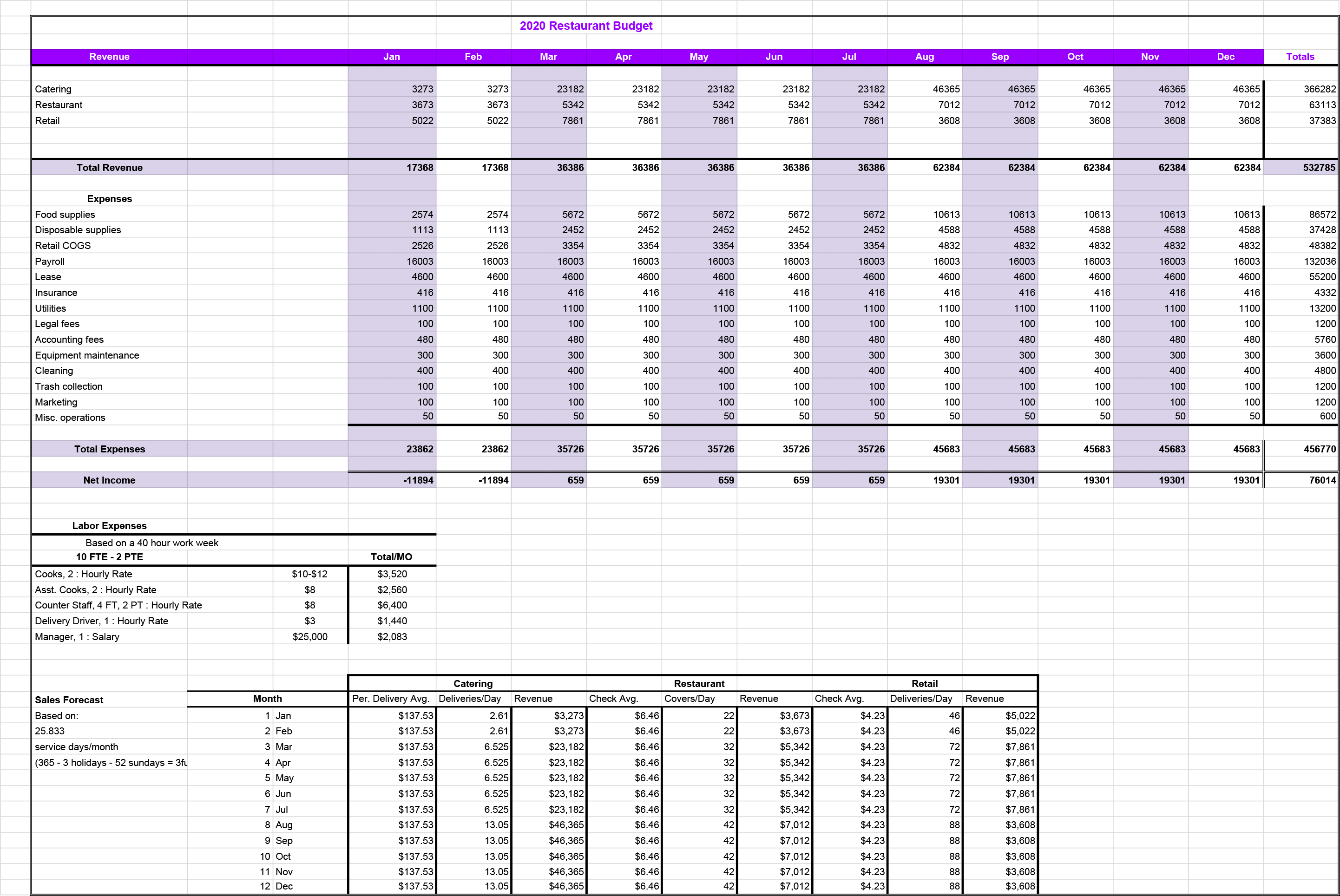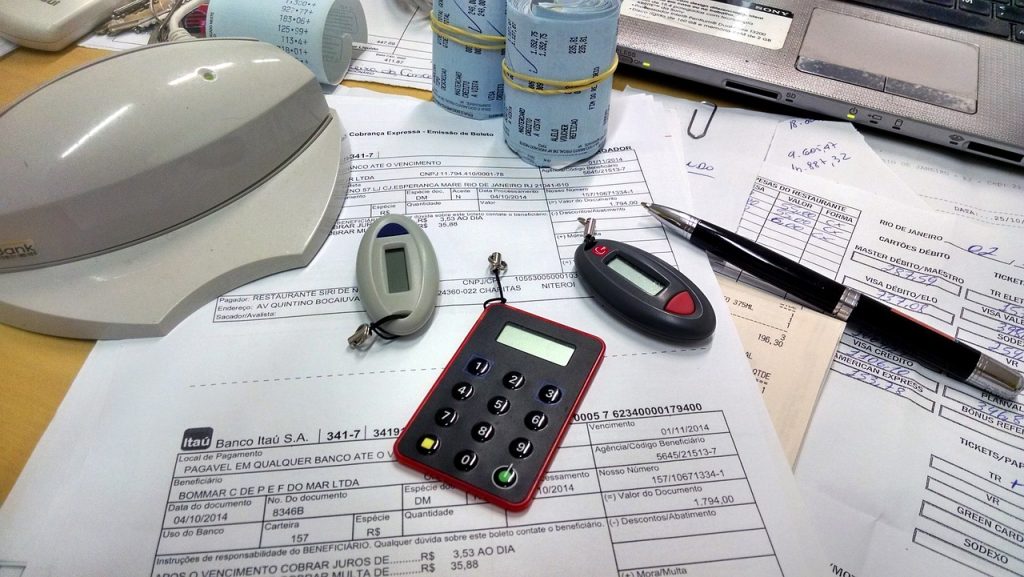
How to Create a Restaurant Budget to Manage Finances & Costs
Order up!
If you own a restaurant, then you know how important it is to learn how to manage restaurant finances. Restaurant budgeting isn’t part of an a la carte menu – it’s an absolute must.
After all, if you don’t perfect your restaurant cash management skills, the industry can quickly chew you up.
Feeling the heat? Get your bearings with this in-depth guide on restaurant finance management.
What is a restaurant budget?
A restaurant budget is a financial limit that you determine is healthy and sustainable for your business.
Be careful not to confuse your restaurant budget with your restaurant sales forecasting, which is a prediction of how your sales will perform within the boundaries set by your restaurant budget.
Whether you need to purchase or lease equipment, recover your business after a disaster, get up-to-date on restaurant technology trends, or any other business expense – you’ll need to factor those costs into your restaurant budgeting plan.
[bctt tweet=”Restaurant budgeting is not fool-proof, no matter how detailed your restaurant cash management plan is. Running a #smallbusiness is complex – but it gets easier with the tools in this guide!” username=”Become_co”]
That said, restaurant budgeting is not fool-proof; no matter how detailed your restaurant cash management plan is, there will eventually be unexpected costs that come up at some point.
Side note: When your restaurant is facing a financial squeeze, having access to same-day business loans can make all the difference. If time is less of a factor, take a few minutes to get familiar with the variety of business loans that are at your disposal. There’s no harm in staying prepared!
Why do I need a restaurant budget?
You need a restaurant budget for the same reason that you would lay out any budget: to be certain that you don’t stretch your finances out too thin.
If you don’t have a restaurant budget plan, then you’re essentially driving with your eyes shut. Maybe you have an idea of where you plan on arriving, but without a budget, your business is morely likely to crash and burn before reaching that goal. A restaurant budget isn’t just keeping your eyes on the road, but can act as a GPS to help you reach your destination.
Okay, enough with the analogies.
The bottom line: You need a restaurant budget to ensure that your business is able to stay ahead of shifting operating expenses, keep earnings above expenditures, and keep the business growing. If you don’t have a restaurant budget, your business is operating on borrowed time.
Restaurant Budget Spreadsheet Example
Guide to creating a restaurant budget
If you’re not sure about how to get started with your restaurant budgeting plan, use the following steps to establish a foundation that you can then build on.
8 Step guide to restaurant budgeting:
1. Define your restaurant’s costs
The first step of how to manage restaurant finances is to know what your expenses are – for restaurants, specifically, those expenses can vary greatly. Here are a handful of potential costs that your restaurant may have on a normal basis:
- Food
- Beverages
- Liquor
- Marketing
- Labor
- Supplies
- Administrative costs
- Utilities
- Insurance
Restaurant owners know that the costs they face from one month to the next will almost always vary – particularly when restaurants need to survive seasonal changes. That’s why it’s important to not only list where your restaurant is spending money but to also measure what the costs really are.
2. Calculate your restaurant’s costs
Whether you’re keeping old-school records with pen and paper or if you’re taking advantage of recent restaurant technology trends, tracking your restaurant’s costs is an essential step toward healthy restaurant cash management practices.
You should keep accurate records of what the expenses were, how much you paid, and what forms of payment you used. Calculating your restaurant’s costs in such a precise manner will help you determine what adjustments you should make when looking back at your totals at the end of each month.
3. Use restaurant sales forecasting
Evaluating your expenses at the end of each month is crucial, but so is restaurant sales forecasting. They say hindsight is 20/20, but that shouldn’t stop you from doing your best to predict what next month’s sales will look like. Why?
The reason you need to keep up on your restaurant sales forecasting is pretty straightforward – if you’re not making enough money to cover your base expenses (what is known as permanent working capital), your business won’t last long. How do you create a restaurant sales forecast?
The most basic way to forecast restaurant sales is to look back at your sales records from previous years and find the average monthly sales, like this:
Sales difference from 2018 to 2019
|
Month |
Sales 2019 |
Sales 2018 |
Difference in $ |
Difference in % |
|
January |
$24,552 |
$21,454 |
$3,098 |
14% |
|
February |
$24,763 |
$21,546 |
$3,217 |
15% |
|
March |
$21,349 |
$20,413 |
$936 |
5% |
|
April |
$24,829 |
$22,297 |
$2,532 |
11% |
|
May |
$23,882 |
$23,572 |
$310 |
1% |
|
June |
$24,876 |
$20,292 |
$4,584 |
23% |
|
July |
$22,986 |
$20,387 |
$2,599 |
13% |
|
August |
$23,605 |
$22,994 |
$611 |
3% |
|
September |
$24,623 |
$23,895 |
$728 |
3% |
|
October |
$23,862 |
$21,374 |
$2,488 |
12% |
|
November |
$23,598 |
$21,287 |
$2,311 |
11% |
|
December |
$25,949 |
$20,528 |
$5,421 |
26% |
|
Full Year |
$288,874 |
$260,039 |
$28,835 |
11% |
You can then use the data you gathered about previous changes year-to-year in order to generate a restaurant sales forecast for the next year, like this:
2020 Sales Forecast
|
Month |
Sales 2019 |
Increase 11% |
Forecasted Sales 2020 |
|
January |
$24,552 |
$2,700 |
$27,252 |
|
February |
$24,763 |
$2,723 |
$27,486 |
|
March |
$21,349 |
$2,348 |
$23,697 |
|
April |
$24,829 |
$2,731 |
$27,560 |
|
May |
$23,882 |
$2,627 |
$26,509 |
|
June |
$24,876 |
$2,736 |
$27,612 |
|
July |
$22,986 |
$2,528 |
$25,514 |
|
August |
$23,605 |
$2,596 |
$26,201 |
|
September |
$24,623 |
$2,708 |
$27,331 |
|
October |
$23,862 |
$2,624 |
$26,486 |
|
November |
$23,598 |
$2,595 |
$26,193 |
|
December |
$25,949 |
$2,854 |
$28,803 |
|
Full Year |
$288,874 |
$31,770 |
$320,644 |
That should be a good starting point, but if you really want to get cooking, then you’ll need to keep much more precise records. Keep reading to find out how.
4. Track your restaurant’s sales
When you track your restaurant’s sales (and expenses, for that matter), you’ll find that using digital solutions is key. While there is software that you can use solely for tracking sales, it’s always better to use more comprehensive solutions – like restaurant POS systems.
The best restaurant point-of-sale systems have built-in KPI reports that give detailed records of metrics such as sales by item, sales by time of day/week/month/year, and so on. Those numbers will open up a whole new world of restaurant budgeting possibilities and can even help you create an ideal pricing strategy.
Once you have accurate records of your restaurant’s costs and sales, you can compare them.
5. Measure your sales against your costs
You’ve covered the fundamentals and now it’s time to start shaping your restaurant budgeting strategy. First off, you’ll want to use the profit margin formula to determine how much money your business is really making, after considering the expenses in relation to earnings.
The ultimate goal for any business owner is to be profitable – so if your costs are higher than your sales, you’ll know right away that there’s urgent work to be done. Of course, there may be occasions when your costs actually do outweigh your sales; for example, if you’re undergoing changes to scale up your business, there may be a month or two when your expenses are larger than usual.
In general, you’ll want to take the necessary measures to keep your sales higher than your costs. Regardless of what your current financial position might be, learning how to manage restaurant finances properly will position your business for continued success.
6. Optimize your restaurant finance management
There are three main ways that you can spice up your restaurant budgeting plan:
- Increase your restaurant’s revenue
- Decrease your restaurant’s expenses
- Use both approaches
To increase revenue, you’ll need to bring in more business and/or raise the prices on your menu. You can increase the volume of business by incentivizing existing customers to come back more often and/or by attracting more new customers with new approaches to advertising (e.g. Social Media Marketing). Alternatively, raising your prices can be tricky and a bit risky if you’re not familiar with designing a pricing strategy – do your due diligence!
To decrease expenses, you’ll need to reevaluate your costs (See steps 1 & 2 above) and determine which of them you can change or even completely do away with. That could mean finding suppliers with better prices, shrinking the number of full-time workers (and replacing with part-time help), and so on. Be careful not to be too short-sighted on this step – it could be that decreasing your long-term expenses will require you to even replace a refrigerator that’s not working efficiently.
You may choose to double your efforts by both increasing revenue and decreasing costs. If that’s the case then you can avoid some of the financial strain by seeking a loan through Become. With the power of advanced technology, Become is able to make the business loan process quicker, easier, and more likely to end in funding for small businesses that have struggled to find funding elsewhere.
Side note: For restaurant owners, there are plenty of restaurant loans out there. But, if you know other small business owners that are in need of a boost to their finances, Become also has a wide variety of industry loans available for businesses in many different sectors.
7. Maximize your restaurant’s profits
Once you’ve balanced your restaurant budget, you can refocus your efforts on finding more and more ways to increase your profit. Gross profit and net profit often get mixed up, so be careful not to make that common mistake. It’s important to know the difference and how each measurement reflects on your restaurant’s overall financial health and stability.
Beyond the primary effect of bringing in more money, increasing profits has some secondary benefits as well. For example, if you seek out a loan through a bank or through alternative lending options, lenders will want to see a consistently strong net profit from month-to-month. The higher your net profits, the better it will look on your loan application and the higher your approval odds will be (though there are many other ways to beat challenging small business lending statistics).
8. Maintain healthy restaurant cash management
Everything you’ve learned so far about restaurant cash management has been useful and important – but if you only run through it once and never revisit your restaurant budgeting plan again, you’ll quickly find that the benefits will be limited ( to say the least).
Your restaurant finance management efforts need to remain consistent if your goal is to maintain a stable and profitable business. One simple way to stay on top of your restaurant budgeting plan is to schedule regular monthly reviews of your budget so that you can make any necessary adjustments. That said, there should also be a more in-depth annual assessment of your restaurant budget where you look at the bigger picture of how your business performed over the year and reconsider your larger financial goals.

Hungry to get started?
You shouldn’t wait until your restaurant’s finances reach a boiling point! Avoid future challenges by getting your restaurant finance management skills up to par now.
No matter which way you cut it, each restaurant’s budgeting plan will be different from the next. So take the time to learn more about your own financial history and how it can influence your restaurant sales forecasting.
Plus, don’t forget to share this article with other restaurant owners who can make good use of the information provided here!







